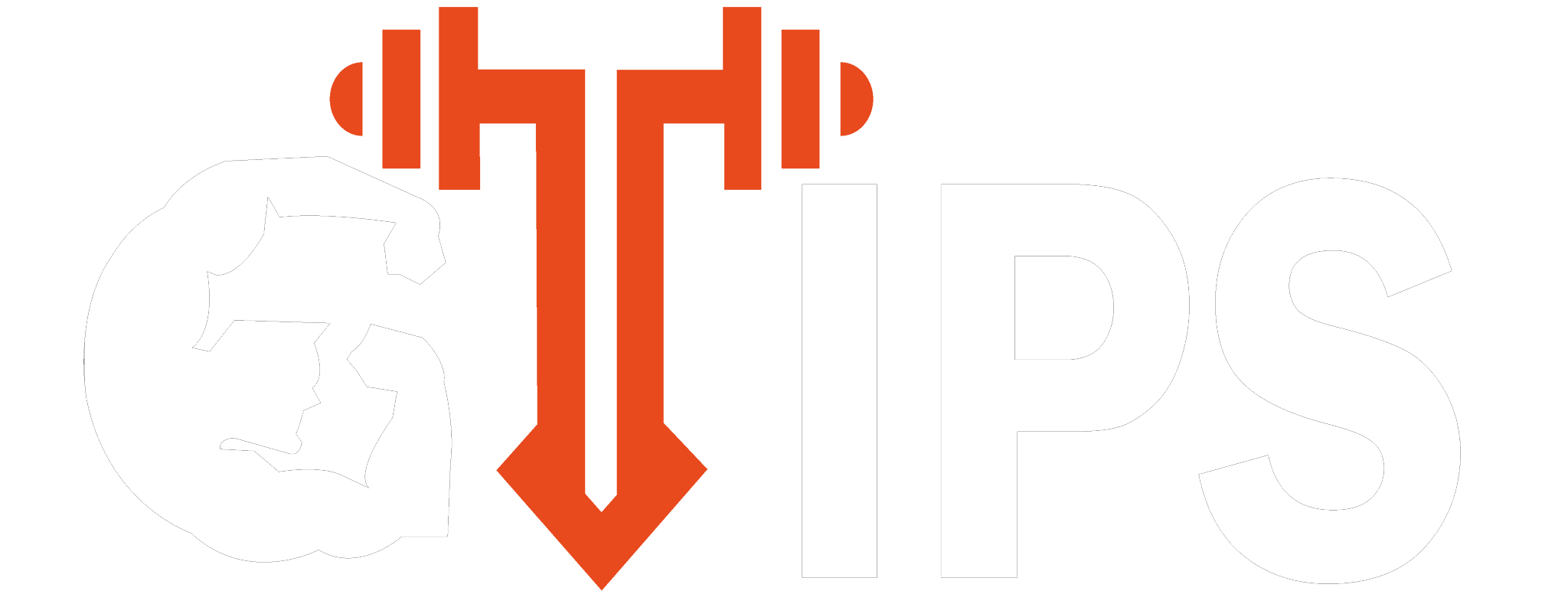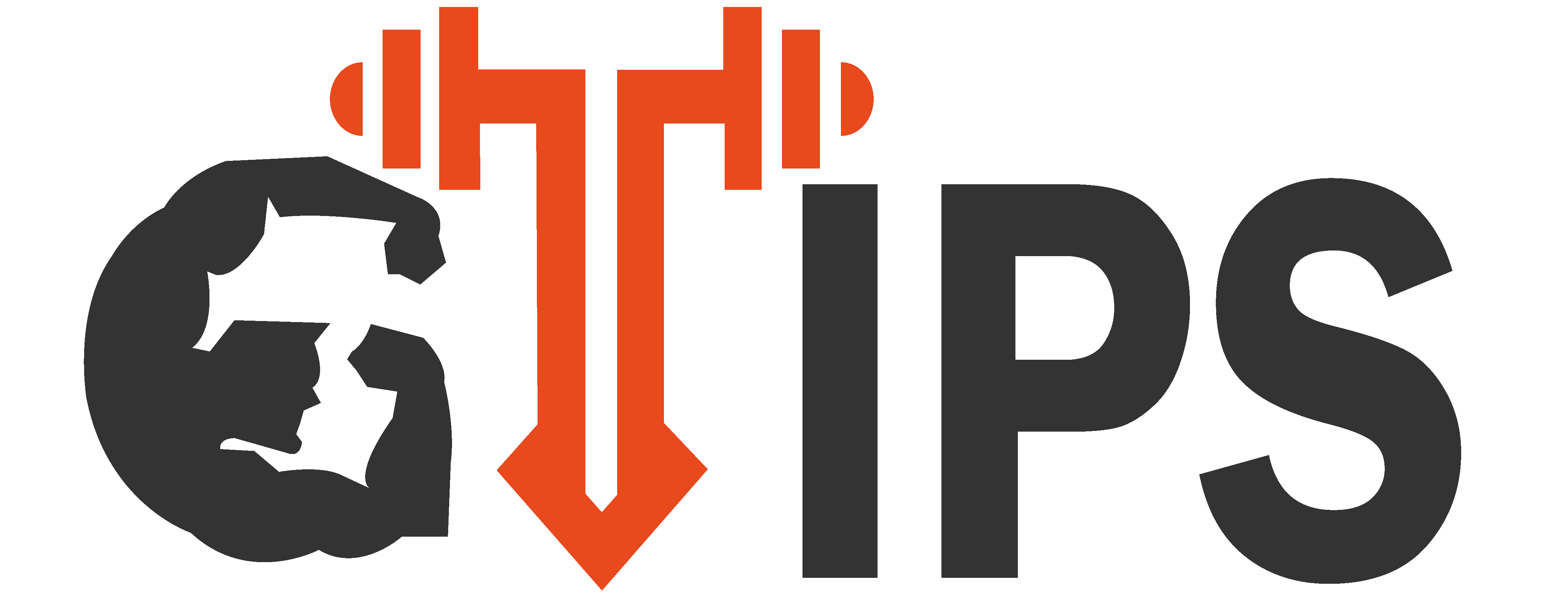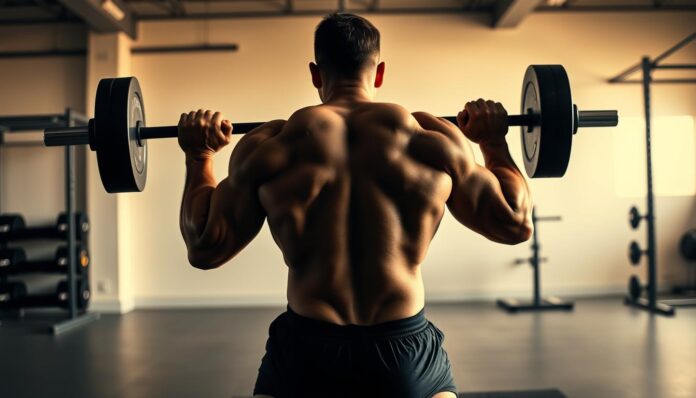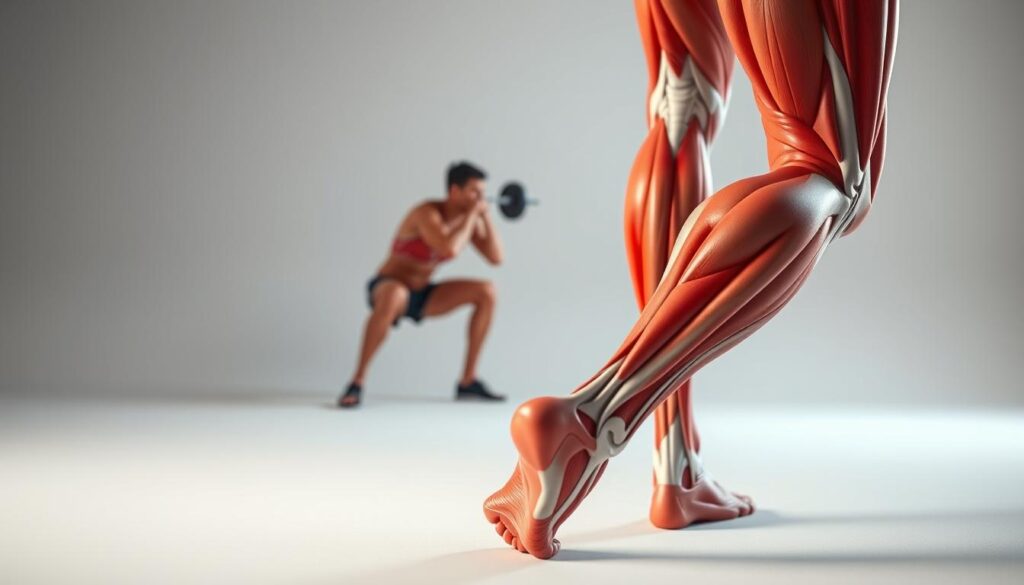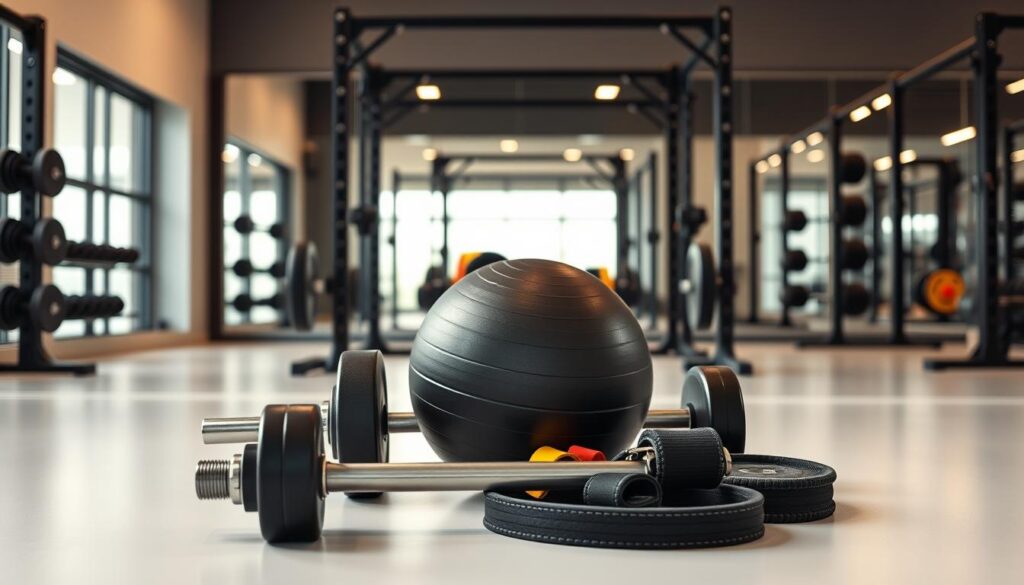Are you ready to change your lower body and reach your athletic peak? Leg workouts for stronger legs do more than build muscle. They change your whole fitness journey.
Your legs are the base of your strength, supporting every move. Strong legs are not just for looks. They boost your performance, balance, and lower injury risk.
Building leg strength is more than just doing exercises. It’s a smart way to build a strong, functional body. It works well in all parts of life. Whether you’re an athlete or just someone who likes to stay active, leg workouts can make a big difference in your fitness and strength.
Key Takeaways
- Leg workouts dramatically improve overall body strength
- Powerful legs enhance athletic performance and balance
- Comprehensive leg training targets multiple muscle groups
- Consistent leg workouts boost metabolic rate
- Strong legs reduce injury risk in daily activities
Understanding the Importance of Leg Training
Leg training is key to a full fitness routine. It’s not just about building muscle. Your leg muscles are the backbone of your body, driving your performance and health. Strong legs can change your fitness journey and unlock new growth.
Regular leg training brings many benefits. These muscles are not just for looks. They’re about real strength and better athletic performance.
Benefits of Regular Leg Training
- Boosts metabolism and calorie burning
- Improves overall body strength
- Enhances athletic performance
- Reduces injury risk in daily activities
Key Muscle Groups in Leg Development
| Muscle Group | Primary Function | Key Leg Exercises |
|---|---|---|
| Quadriceps | Knee extension | Squats, Lunges |
| Hamstrings | Knee flexion | Deadlifts, Leg Curls |
| Glutes | Hip movement | Hip Thrusts, Glute Bridges |
| Calves | Ankle movement | Calf Raises, Jump Rope |
Role of Leg Strength in Overall Fitness
Your leg muscles are vital for functional fitness. Strong legs help with posture, balance, and support every movement. Whether you’re an athlete or just starting, focusing on leg muscle growth boosts your overall fitness.
“Strong legs are the foundation of a strong body” – Professional Fitness Trainer
Understanding leg training helps you create better workouts. It maximizes your leg exercises and promotes full muscle growth.
Essential Equipment for Leg Workouts
To build strong legs, you need the right tools. Whether you’re at a gym or working out at home, the right equipment makes a big difference. It helps you get the most out of your leg workouts.
Having a variety of equipment is key. It lets you work different muscles and keeps your workouts interesting. Here are the must-haves for better leg training:
- Barbells: Essential for serious leg exercises like squats and deadlifts
- Dumbbells: Great for one-leg exercises and balancing muscles
- Kettlebells: Perfect for dynamic moves and functional strength
- Resistance Bands: Best for mobility and adding resistance
Gym machines are vital for leg growth. Machines like leg extensions and curls target specific muscles. They’re great for beginners and pros alike.
Home gym users can also get great results with the right gear. A good bench, dumbbells, and resistance bands can make your home gym as good as a commercial one.
Pro Tip: Quality always trumps quantity. Choose equipment that matches your fitness level and training goals.
When picking out equipment, think about durability, versatility, and your goals. Your gear should push you while keeping you safe and helping you build muscle.
Compound Exercises for Maximum Leg Growth
To grow your leg muscles, you need the right leg exercises. Compound movements are key. They work on many muscles at once, helping your legs grow strong.
Effective leg workouts use exercises that work many muscles. This makes your training more efficient. It also boosts your athletic skills.
Back Squats and Front Squats
Back squats and front squats are great for your legs. They strengthen your quadriceps. The main difference is where you hold the bar:
- Back Squats: Works your glutes, hamstrings, and lower back
- Front Squats: Focuses on your quadriceps and core
Romanian Deadlifts
Romanian deadlifts are vital for your hamstrings and back. Proper technique is key to get the most out of it. This exercise builds:
- Hamstring strength
- Lower back stability
- Power in your posterior chain
Bulgarian Split Squats
Bulgarian split squats are a challenging exercise. They improve balance and strengthen your legs. They’re great for fixing muscle imbalances and boosting single-leg strength.
Pro tip: Start with bodyweight and progress to weighted variations as your strength improves.
Leg Workouts for Stronger Legs
To get stronger legs, you need a good plan. Your workouts should work on many muscles at once. This way, you build strong legs in a complete way.
For powerful legs, mix compound and isolation exercises. This method makes sure all muscles work together. It helps your legs grow evenly.
- Compound movements for overall leg strength
- Targeted isolation exercises for muscle definition
- Progressive overload techniques
- Balanced muscle group development
Your leg routine should tackle different muscles. Recommended exercises for powerful legs include:
- Barbell back squats
- Walking lunges
- Leg press variations
- Romanian deadlifts
- Step-ups
Creating a good leg workout needs planning. Mix up your exercises, focus on form, and increase weights slowly. This keeps your muscles challenged and safe from injury.
“Consistency and proper technique are the keys to developing truly powerful legs.”
Leg workouts are more than just lifting heavy. They’re about a balanced plan for strong legs. This boosts your fitness and sports skills.
Targeting the Posterior Chain
Your leg muscle growth is more than just doing leg exercises. The posterior chain is key for full leg development. It targets important muscles often missed in regular workouts.
Good hamstring training is not just simple moves. It needs a smart plan that works many muscles at once. The posterior chain is vital for sports skills and injury prevention.
Hamstring Development Techniques
Building strong hamstrings needs special exercises. Here are some effective methods:
- Romanian deadlifts for deep muscle activation
- Nordic hamstring curls for eccentric strength
- Single-leg Romanian deadlifts for balance and isolation
Glute Activation Exercises
Strong glutes are key for leg growth and the posterior chain. Make sure your workout includes these glute-focused exercises:
- Glute bridges
- Hip thrusts
- Banded lateral walks
Lower Back Strengthening
A strong lower back is vital for leg performance and safety. Add these exercises to your routine:
| Exercise | Primary Benefit | Recommended Sets |
|---|---|---|
| Good Mornings | Lower Back Strength | 3-4 sets |
| Superman Holds | Spinal Stabilization | 3 sets |
| Back Extensions | Posterior Chain Engagement | 3-4 sets |
Adding these exercises to your leg workout will strengthen your posterior chain. This supports better leg muscle growth and sports performance.
Quad-Focused Training Techniques
Building strong quadriceps is key for a strong lower body. Your quad muscles are vital for sports and everyday activities. By using specific techniques, you can get defined legs and better strength.
To train your quads well, you need a smart plan. Different exercises work your quads in different ways. Here are some top methods to boost your quad strength:
- Front squats with narrow stance
- Leg press variations
- Walking lunges
- Step-ups with heavy weights
It’s important to know how each exercise works your quads. Each one targets a different part of the muscle, helping you build strong quads.
| Exercise | Muscle Emphasis | Recommended Sets |
|---|---|---|
| Front Squats | Vastus Medialis | 3-4 sets of 8-12 reps |
| Leg Extensions | Entire Quadriceps | 3 sets of 12-15 reps |
| Walking Lunges | Quadriceps Stabilization | 3 sets of 20 steps |
Pro tip: To keep growing your quads, always increase the challenge. Add more weight, reps, or try harder exercises.
Make sure your quad workouts include both big and small exercises. This way, you’ll work your quads fully and avoid getting stuck in a routine.
Calf Training and Development Strategies
To build strong calves, focus on specific leg workouts. Many find it hard to grow their calf muscles. But, with the right training, you can boost your lower leg strength and look.
Calf muscles are tough to grow. They need special training to grow and improve leg strength.
Standing Calf Raises: Foundation of Calf Development
Standing calf raises are key for strong lower legs. Here’s how to get the most out of them:
- Use a raised platform to increase range of motion
- Perform slow, controlled movements
- Focus on full extension and contraction
- Aim for 3-4 sets of 12-15 repetitions
Seated Calf Exercises: Targeting Deep Muscle Fibers
Seated calf exercises work different muscle fibers. They help build strong calf muscles:
- Use machine-based seated calf raises
- Incorporate bodyweight seated variations
- Experiment with different foot positions
- Maintain constant tension throughout the movement
Progressive Overload: The Key to Continuous Calf Growth
To keep improving your leg workouts, use progressive overload:
- Gradually increase weight
- Adjust repetition ranges
- Modify time under tension
- Introduce advanced training techniques
Pro tip: Consistency is key in calf muscle development. Treat your calves like any other muscle group with dedicated, strategic training.
Recovery and Injury Prevention
Building strong legs is more than just doing intense workouts. How you recover is just as important. It helps your muscles grow and keeps you safe from injuries. Good recovery lets your muscles fix, get stronger, and grow after hard workouts.
When you’re working on your legs, it’s key to prevent injuries. Mix tough leg exercises with smart recovery methods. This keeps your body safe from too much stress.
- Start with dynamic warm-ups before tough leg workouts
- Do static stretches after your leg exercises
- Give 48-72 hours off between leg workouts
- Use foam rolling to help muscles recover and relax
Important recovery steps can lower your chance of leg injuries. Pay attention to your body’s signs and don’t ignore pain or discomfort. Rest days are not weak. They’re vital for building strong, durable leg muscles.
“Recovery is where muscle growth truly happens. Respect your body’s healing process.” – Professional Strength Coach
Good food and water are also key for recovery. Eat foods high in protein and drink enough water. They help your muscles heal and reduce swelling after hard leg exercises.
Creating a Progressive Leg Training Program
Building a strong leg workout plan needs careful thought and a step-by-step approach. Your training should grow with your fitness, aiming for explosive strength. This is done through smart planning.
A good leg training program focuses on gradual improvement and constant challenge. Your muscles get stronger as they face more demanding exercises.
Beginner to Advanced Progression
Your leg workout journey has several stages:
- Beginner: Learning basic movements
- Intermediate: Adding more weight and complex exercises
- Advanced: Using advanced training methods
Volume and Intensity Guidelines
It’s important to balance workout volume and intensity for explosive leg strength. Here are some tips:
| Fitness Level | Weekly Sets | Intensity Range |
|---|---|---|
| Beginner | 6-9 sets | 50-65% 1RM |
| Intermediate | 9-12 sets | 65-80% 1RM |
| Advanced | 12-15 sets | 75-90% 1RM |
Periodization Strategies
Periodization helps avoid plateaus and keeps muscles growing. It involves switching between:
- Phases focused on muscle growth
- Blocks for building strength
- Segments for power and explosive training
“Consistent progression is the key to unlocking your leg training full power.” – Strength Training Expert
Remember, your leg workout plan should be flexible and match your fitness goals and how your body responds.
Nutrition for Leg Muscle Growth
Getting strong legs is not just about working out hard. What you eat is also key. Eating right can really help your leg muscles grow and get stronger.
Protein is the main fuel for muscle repair and growth. You should eat 1.6-2.2 grams of protein for every kilogram of your body weight each day. This helps your leg muscles grow well.
Key Nutritional Strategies for Leg Muscle Development
- Eat high-quality protein like lean meats, fish, and eggs
- Keep a balance of carbs and healthy fats
- Eat protein around your workouts for best muscle recovery
It’s important to balance your nutrients for strong legs. Here’s a good mix:
| Nutrient | Percentage of Daily Calories | Purpose |
|---|---|---|
| Carbohydrates | 45-55% | Energy for leg muscle workouts |
| Proteins | 25-35% | Muscle repair and growth |
| Fats | 20-25% | Hormonal support and recovery |
Drinking enough water is also vital for muscle growth. Try to drink at least 1.5 liters of water for every kilogram lost during exercise. This helps your muscles work well and recover after leg training.
Good nutrition can change your leg muscle growth journey. Focus on quality protein, balanced nutrients, and enough water. This will help you build stronger, more powerful legs.
Conclusion
Building strong legs is more than a fitness goal. It’s a commitment to your athletic performance and body strength. To achieve this, you need dedication, strategic planning, and a holistic training approach.
Transforming your lower body fitness requires consistent training and precise exercise selection. Understanding muscle development is key. Your leg training should include compound movements, targeted muscle work, and progressive overload.
Nutrition and recovery are vital for muscle growth and injury prevention. Remember, building stronger legs is a gradual process. Each workout brings you closer to your fitness goals.
Integrate the principles of leg training, from squats and deadlifts to calf and posterior chain exercises. This will help you maximize your leg strength. Stay focused and consistent, and watch your leg strength transform.
FAQ
How often should I do leg workouts?
Train your legs 2-3 times a week for best results. Make sure to rest for at least 48 hours between hard leg workouts. This helps your muscles grow and recover without overdoing it.
Can I build strong legs without gym equipment?
Yes, you can! Bodyweight exercises like squats and lunges are great for leg strength. You can also use resistance bands to boost your workouts at home.
How long does it take to see results from leg training?
You might see changes in 8-12 weeks with regular training. Results vary based on diet, how hard you work out, your genes, and how well you recover.
What are the most important leg muscles to target?
Focus on four key muscles: quadriceps, hamstrings, glutes, and calves. Make sure your workouts cover all these areas for a balanced leg workout.
How can I prevent leg workout injuries?
To avoid injuries, warm up well, keep the right form, and slowly increase the intensity. Use the right weights, stretch, and rest enough between workouts.
Do I need supplements for leg muscle growth?
Supplements like protein and creatine can help, but they’re not essential. Eating enough protein is key for building leg muscles.
How important is nutrition in leg muscle development?
Nutrition is vital for growing leg muscles. Eat enough protein, stay slightly calorie-positive, and include complex carbs and healthy fats. This supports muscle repair and growth.
Can leg workouts help with weight loss?
Yes, leg exercises can aid in weight loss. They work big muscle groups, boost metabolism, burn calories, and build lean muscle. This increases your fat-burning ability.
What’s the difference between strength training and muscle hypertrophy for legs?
Strength training aims to increase force with fewer reps (1-5). Muscle hypertrophy focuses on growth with more reps (8-12). Both are important for strong legs.
How do I know if I’m progressing in my leg workouts?
Look for signs like lifting heavier weights, doing more reps, and improving form. Notice if you can recover faster and see changes in muscle size and strength.
